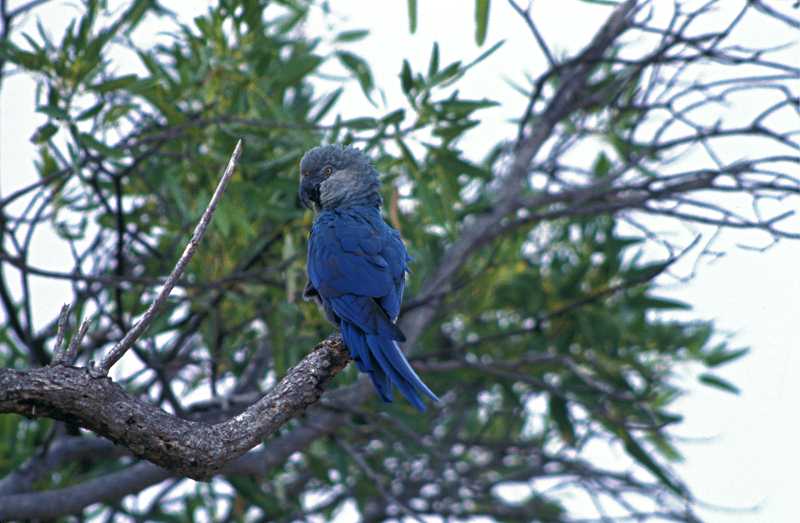The Spix’s Macaw (Cyanopsitta spixii) is listed as Extinct in the Wild due to habitat destruction and illegal trapping. In 1990, the World Parrot Trust funded a survey for Spix’s Macaws remaining in Brazil. One last bird was discovered in the search; by 2000 it had disappeared. In 2002, a captive Spix’s Macaw was found living in the United States by a parrot enthusiast. After an intense five-month effort by the WPT, the rescuer and veterinarians, geneticists and government officials, the macaw named Presley was returned to its native Brazil to join a breeding program in Recife, after about 25 years in captivity in the US. He was paired for a time with a female, but no breeding occurred. There are hundreds of birds in private hands, with one facility conducting releases into the wild.
Status: IUCN Extinct in the Wild / CITES Appendix I
Population: Extinct in the wild with a number released in the 2020s; unknown numbers in captivity.
Threats: This macaw has a restricted range. Was gravely affected by trapping for wild bird trade and the almost total loss of its nesting habitat.
Range: The Rio Sao Franscisco Valley, in N Bahia, Brazil.
Natural history: Spix’s Macaw requires gallery woodland with Tabebuia caraiba trees near creeks in the caatinga for breeding. Its food came from two Euphoribacae plant species. Birds used well-used flight paths to and from food sources and until the 1980s were strongly gregarious.

